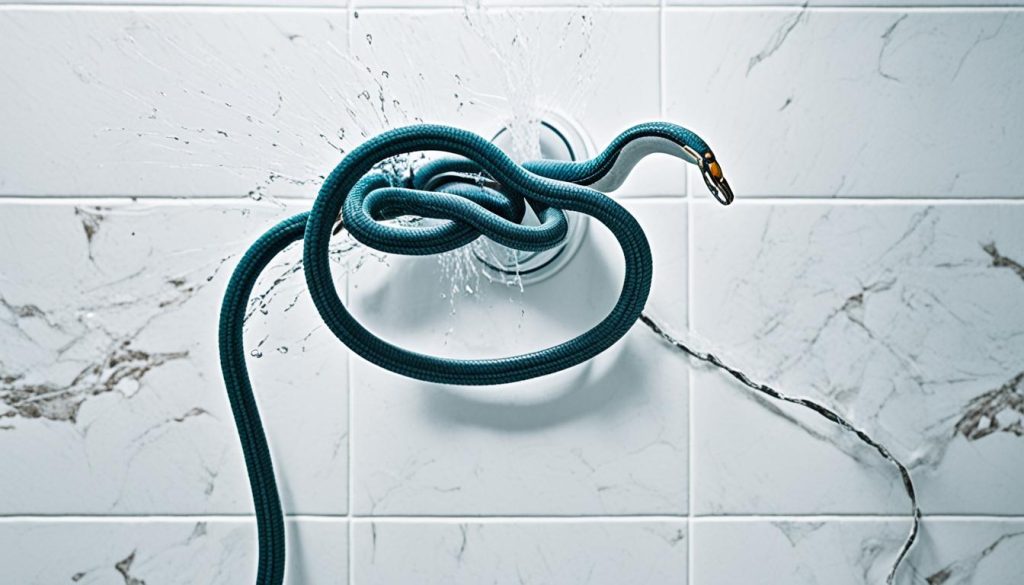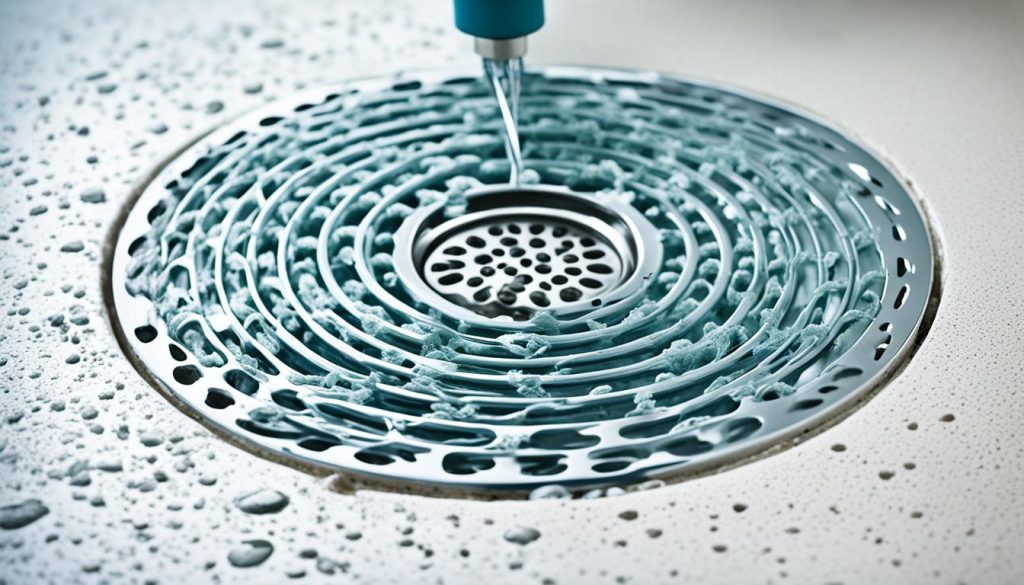Effortless Ways to Unclog Hair from a Drain
Did you know that hair is one of the leading causes of drain clogs? In fact, a single hair strand can easily slip down your drain, and over time, they can accumulate, leading to frustrating clogs and poor drainage. Whether it’s from your morning shower or grooming routine, dealing with hair clogs is a common household issue that can disrupt your daily routine.
Fortunately, there are simple and effective methods to unclog hair from your drain without having to call in the experts. By following a few easy steps, you can get your drains flowing freely once again. Say goodbye to slow drains and pesky clogs!
1. Use Baking Soda & Vinegar on the Hair Clog Before Plunging It Out
One of the most effective methods to unclog a hair blockage is by using a combination of baking soda and vinegar. Start by squirting dish soap into the drain, followed by a cup of vinegar and a cup of baking soda. Wait a few minutes for the chemical reaction to occur, then flush the drain with boiling water. Use a cup plunger to remove any remaining hair. Repeat the process if necessary.
Using baking soda and vinegar is a natural and affordable way to dissolve the hair clog in your shower drain. The chemical reaction between the baking soda and vinegar helps break down the hair and other debris, making it easier to flush out. It’s important to follow up with hot water and plunging to ensure that all the hair is cleared from the drain.
If you’re unsure about using chemicals or prefer a more eco-friendly option, this method is a great alternative. It’s also a preventative measure since the baking soda and vinegar can help keep your pipes clear of hair and other buildup.
| Pros | Cons |
|---|---|
| Effective in dissolving hair clogs | May require multiple attempts |
| Easy and affordable | Not suitable for severe clogs |
| Natural and eco-friendly | Can have a strong odor |
2. Pull the Hair Out of the Drain with Tweezers or Needle-Nose Pliers
If plunging alone doesn’t remove the hair clog, try using tweezers or needle-nose pliers to pull it out. Remove the drain stopper, if applicable, and shine a flashlight into the drain to locate the blockage. Use the tweezers or pliers to gently pull out the hair. Wear gloves for hygiene and run hot water down the drain to flush out any remaining hair.
When other methods fail to unclog your shower drain, manually removing the hair with tweezers or needle-nose pliers can be a practical solution. This method allows you to extract hair that may be too stubborn or tightly tangled to remove with a plunger alone. By directly accessing the blockage with precision tools, you can effectively dislodge the hair and restore proper water flow in your drain.
Follow these steps to pull the hair out of the drain:
- Begin by removing the drain stopper, if your shower or bathtub is equipped with one. This will give you a clear view and better access to the hair clog.
- Shine a flashlight into the drain to locate the exact position of the blockage. This will help you identify the area where the hair is concentrated.
- Using either tweezers or needle-nose pliers, carefully reach into the drain and grasp the hair as close to the base as possible. Gently pull the hair out, taking care not to push it further into the drain.
- Dispose of the extracted hair in a waste bin or trash bag. Avoid flushing it down the toilet or leaving it on the bathroom floor.
- Once you have removed as much hair as possible, run hot water down the drain for several minutes to flush out any remaining debris.
It is important to wear gloves while performing this task to maintain hygiene and protect your hands from any potentially harmful bacteria or residue. Additionally, the hot water will help disinfect the drain and ensure that any trapped hair or debris is completely cleared.
By manually pulling the hair out of your shower drain, you effectively eliminate the source of the clog and prevent further blockages. This method provides a targeted approach to removing hair and is particularly useful for individuals with long hair or households with multiple bathroom users.
| Pros | Cons |
|---|---|
| Can effectively remove tightly tangled hair | Requires manual effort and accessibility to the drain |
| Allows for precise extraction of the hair | May not work well for large or stubborn clogs |
| Does not require the use of chemicals | Can be time-consuming for extensive clogs |
3. Purchase a Drain Snake
If other methods fail, a drain snake can be a useful tool to break apart the hair clog. Straighten out a wire hanger or purchase a drain snake device like a zip-it tool. These tools are specifically designed to remove hair clogs from drains.
To use a drain snake, insert it into the drain and rotate it to break up the clog. The sharp edges of the snake will grab onto the hair and allow you to pull it out. Be sure to follow the instructions provided with the tool to ensure safe and effective use.
If the clog doesn’t clear completely after using the drain snake, you can try following up with the baking soda and vinegar method mentioned earlier. Alternatively, you can flush the drain with hot water to further dislodge any remaining debris. Regularly using a hair catcher for the shower drain can also help prevent hair clogs in the future.
Using a drain snake is an effective way to remove hair clogs from your drain and restore proper drainage. Ensure to use the tool properly and take necessary precautions to avoid any damage to your pipes. Combine its usage with other methods for best results and consider implementing preventative measures to keep your drains hair-free.
4. Remove Your Whole Drain
In extreme cases where the hair clog persists and none of the previous methods have been successful, you may need to consider removing the entire drain to thoroughly clean it out. This method requires more extensive plumbing knowledge and is best left to professionals if you are unsure of the procedure. It’s important to note that removing the whole drain should be your last resort and should only be done if all other options have failed.
To remove the drain, you can take the following steps:
- Unscrew the p-trap under the sink drain or use a plug wrench to pry out the drain in a shower or tub.
- Gently disconnect any additional parts or traps connected to the drain.
- Thoroughly clean all parts, including the drainpipe and any other components that may have accumulated hair and debris.
- Once cleaned, reassemble the drain and securely fasten all parts.
- Test the drain by running water and checking for any leaks.
If you’re unsure about the process or lack the necessary tools, it’s recommended to call a professional drain cleaning service. They have the expertise and equipment to ensure the clog is properly resolved and the drain system is functioning optimally.
Tips:
- Make sure to cover the drain opening with a cloth or stopper to prevent any small parts from falling into the drain as you work.
- Take pictures or make notes of the disassembling process to help with reassembling the drain later.
- Consider using a hair catcher for your shower drain to prevent future clogs. These handy devices can trap hair and other debris, making it easier to remove and clean.
| Pros | Cons |
|---|---|
| Allows for thorough and deep cleaning of the drain | Requires professional assistance or extensive plumbing knowledge |
| Can effectively remove stubborn hair clogs | May be time-consuming and labor-intensive |
| Ensures long-term prevention of future clogs | Disconnection of the drain may cause additional plumbing issues if not done correctly |
Ways to Prevent Hair from Clogging Drains in the Future
Now that you’ve successfully unclogged your drain, it’s time to take proactive steps to prevent hair clogs from happening again. Here are some simple yet effective ways to keep your drains flowing freely:
1. Install a Hair Catcher: One of the easiest and most effective solutions is to use a hair catcher for your shower drain. These small devices fit over the drain and catch the hair before it has a chance to go down the pipe. Simply empty the hair catcher regularly to prevent build-up.
2. Brush Your Hair Before Showering: Before getting into the shower, take a few moments to thoroughly brush your hair. This will help remove any loose hairs that would otherwise end up in the drain.
3. Regularly Clean Your Drain: Make it a habit to clean your drains on a regular basis. You can use a combination of baking soda and vinegar to help dissolve any hair or build-up. Pour the mixture down the drain, let it sit for a few minutes, then flush with hot water.
4. Use Drain Strainers: In addition to a hair catcher, consider using drain strainers in other areas of your home where hair may accumulate, such as the bathroom sink. These small mesh strainers can be easily placed over the drain to catch any hair and prevent clogs.
By implementing these preventative measures, you can significantly reduce the chances of hair clogs in your drains. Remember, a little prevention goes a long way in maintaining clear and functional plumbing.
- Investing Wisely: How Windows & Doors in Boost Property Value and Financial Health - April 24, 2025
- The Financial Impact of Personal Injuries: Why Legal Help Matters for Business Owners - April 16, 2025
- The Hidden Financial Costs of Domestic Assault: What Business Owners Need to Know - April 16, 2025














